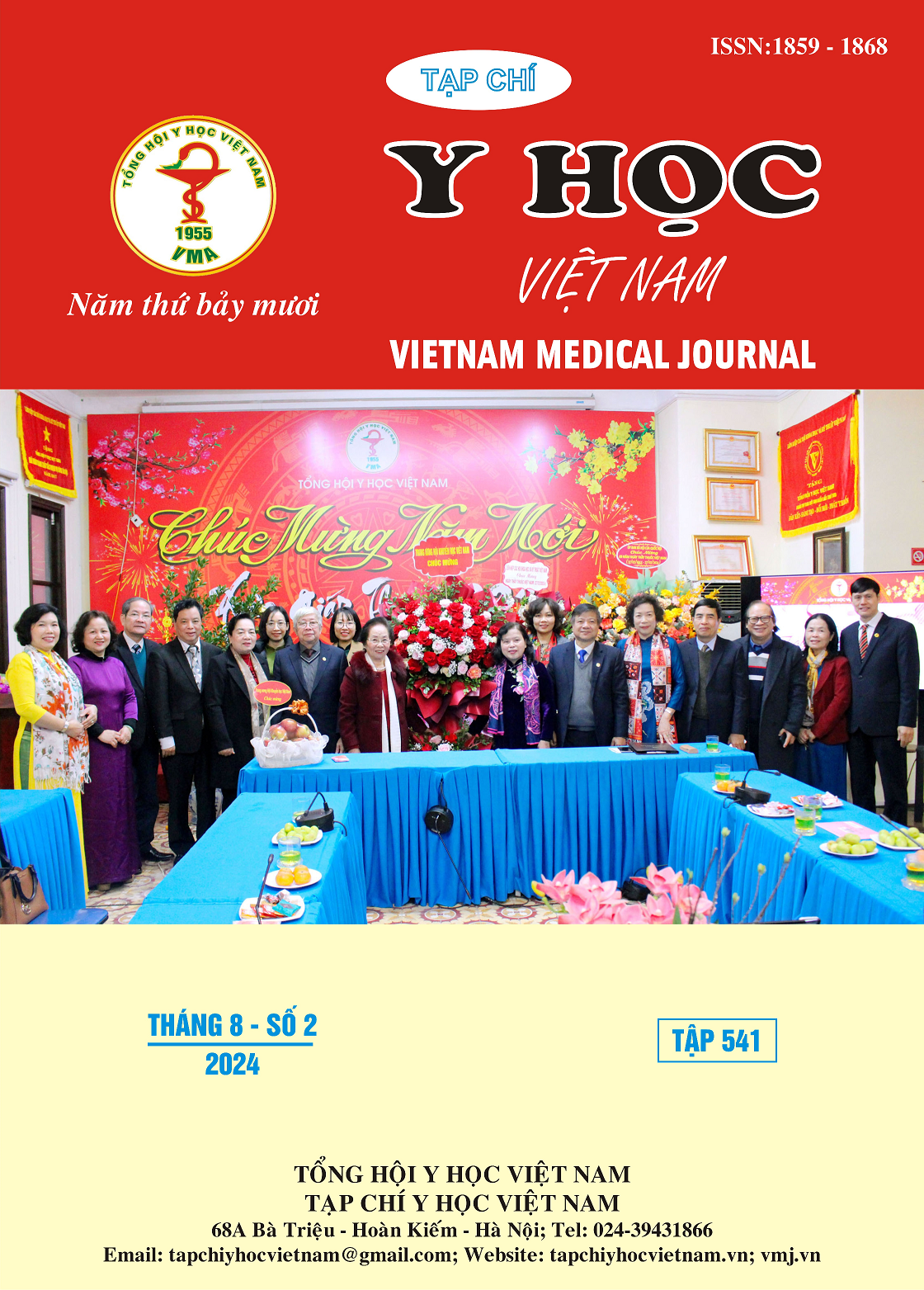STUDY ON THE RESULTS OF POST-TRAUMATIC CROOKED NOSE PLASTIC SURGERY
Main Article Content
Abstract
Object: To evaluate the results of post-traumatic crooked nose plastic surgery. Subjects and research methods: Cross-sectional description, prospective on 40 patients with crooked Nose sequelae due to trauma operated on at Ear, Nose and Throat Hospital Ho Chi Minh City during the period from 12/2020 to 12/2023. Results: Most patients have no nasal congestion (80%) after 3 months of surgery. After 3 months of surgery, the indexes α angle, internal nasal valve angle, nasofrontal angle, nasal tip height, nasal bridge length, nasal pressure, and nasal airflow all improved significantly. However, the nasolabial angle did not change significantly after 3 months of surgery. Most patients are very satisfied or fair satisfied with the results after 3 months of surgery (87,5%). Conclusion: Most patients have no nasal congestion (80%) after 3 months of surgery. After 3 months of surgery, the indexes α angle, internal nasal valve angle, nasofrontal angle, nasal tip height, nasal bridge length, nasal pressure, and nasal airflow all improved significantly. Most patients are very satisfied or fair satisfied with the results after 3 months of surgery (87,5%).
Article Details
Keywords
Plastic surgery, Crooked Nose, Injury.
References
2. Frodel J. L. (2012). Revision of severe nasal trauma. Facial Plast Surg, 28(4): 454-64.
3. Jang Y. J., Wang J. H., Lee B. J. (2008). Classification of the deviated nose and its treatment. Arch Otolaryngol Head Neck Surg, 134(3): 311-5.
4. Rohrich R. J., Gunter J. P., Deuber M. A., et al. (2002). The deviated nose: optimizing results using a simplified classification and algorithmic approach. Plast Reconstr Surg, 110(6): 1509-23; discussion 24-5.
5. Cheng L. H., Wang H. W., et al. (2012). Twisted nose: a new simple classification and surgical algorithm in Asians. Eur Arch Otorhinolaryngol, 269(2): 551-6.
6. Stewart M. G., Witsell D. L., Smith T. L., et al. (2004). Development and validation of the Nasal Obstruction Symptom Evaluation (NOSE) scale. Otolaryngol Head Neck Surg, 130(2): 157-63.
7. Foda H. M. (2005). The role of septal surgery in management of the deviated nose. Plast Reconstr Surg, 115(2): 406-15.
8. J. Merkle., L. Kohlhas., G. Zadoyan., R. Mösges., M. Hellmich. (2014), Rhinomanometric reference intervals for normal total nasal airflow resistance. Rhinology Journal, 52(4), pp: 292-299.


